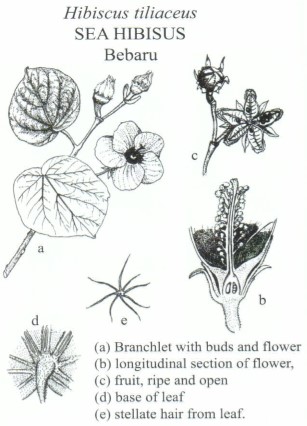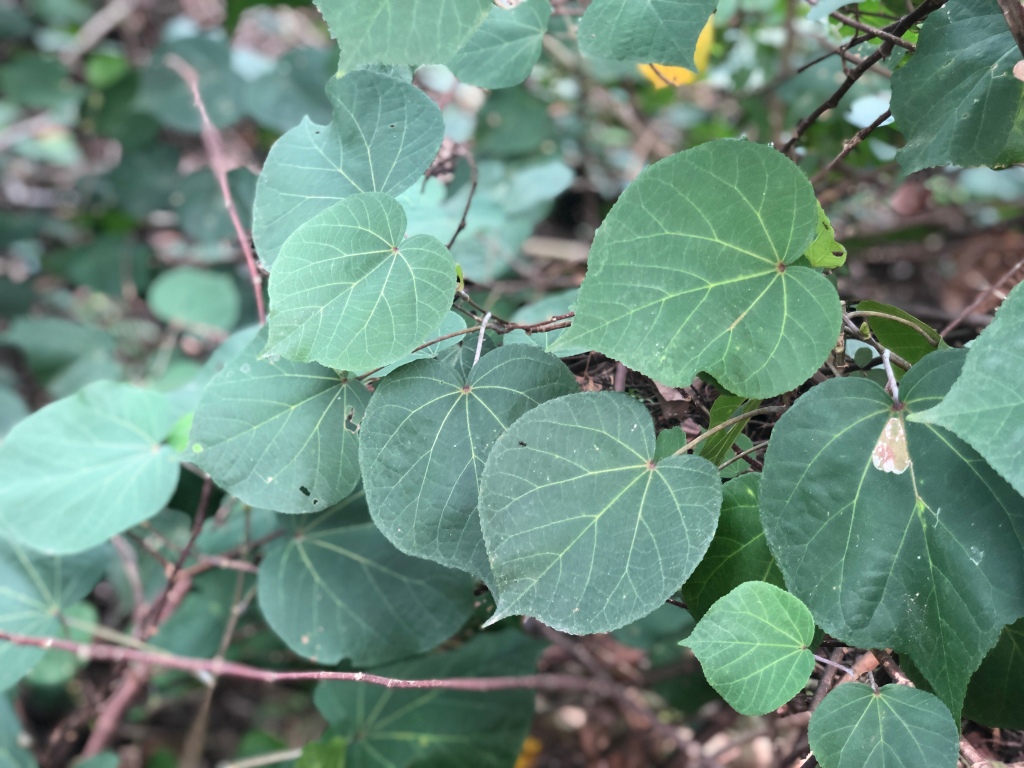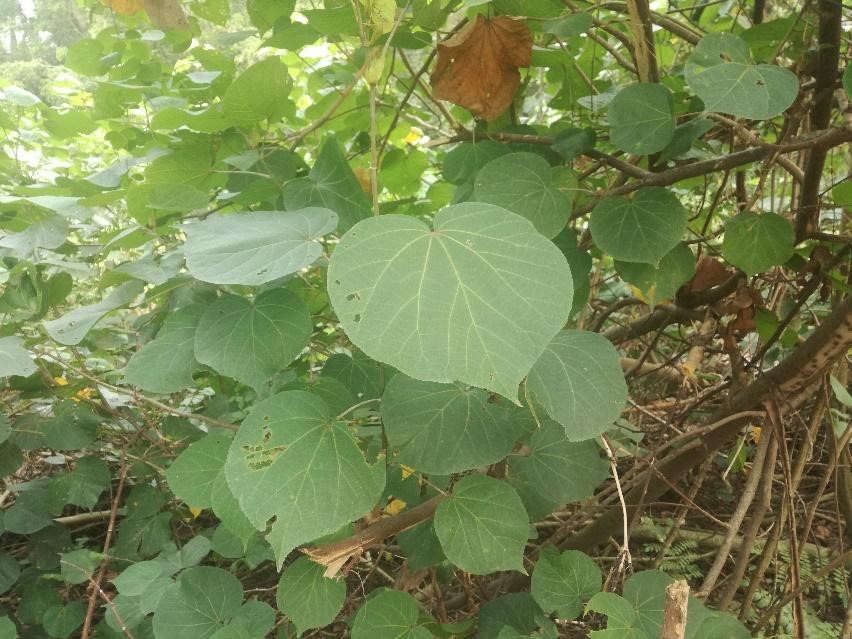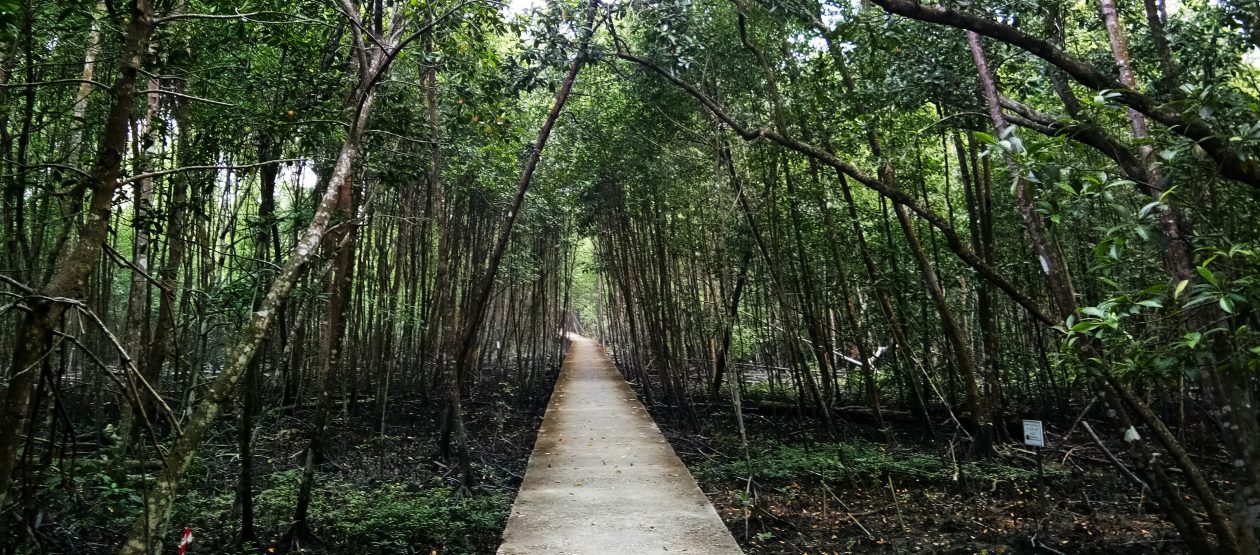CLICK BELOW FOR AUDIO GUIDE
Hibiscus tiliaceus is a species of flowering tree in the mallow family, Malvaceae, that is native to the Old World tropics. Common names include sea hibiscus, baru or bebaru in Malay. It is commonly found growing on beaches, by rivers and in mangrove swamps. Sea Hibiscus is well adapted to grow in coastal environment in that it tolerates salt and waterlogging and can grow in quartz sand, coral sand, marl, limestone, and crushed basalt. It grows best in slightly acidic to alkaline soils (pH of 5–8.5).

The specific epithet, “tiliaceus” refers to its resemblance of the leaves to those of the related Tilia species. Hibiscus tiliaceus reaches a height of 4–10 m (13–33 ft), with a trunk up to 15 cm (5.9 in) in diameter. The flowers of hibiscus tiliaceus are bright yellow with a deep red center upon opening. Over the course of the day, the flowers deepen to orange and finally red before they fall. The branches of the tree often curve over time. The leaves are heart shaped.

The wood of Hibiscus tiliaceus has been used in a variety of applications, such as sea craft construction, firewood, and wood carvings. It is easy to plane and turns well, so it is regarded by many as a high-quality furniture wood. Plant fibers taken from the stems have traditionally been used in rope making, while its bark has been used like cork, in sealing cracks in boats. The bark and roots may be boiled to make a cooling tea to cool fevers, and its young leafy shoots may be eaten as vegetables.

Hibiscus tiliaceus is widely used in Asian countries as a subject for the art of bonsai, especially Taiwan. The finest specimens are taken from Kenting National Park. Lending itself to free grafting, the leaf size is reduced fairly quickly. In Indonesia, Hibiscus tiliaceus is also used for fermenting tempeh.
